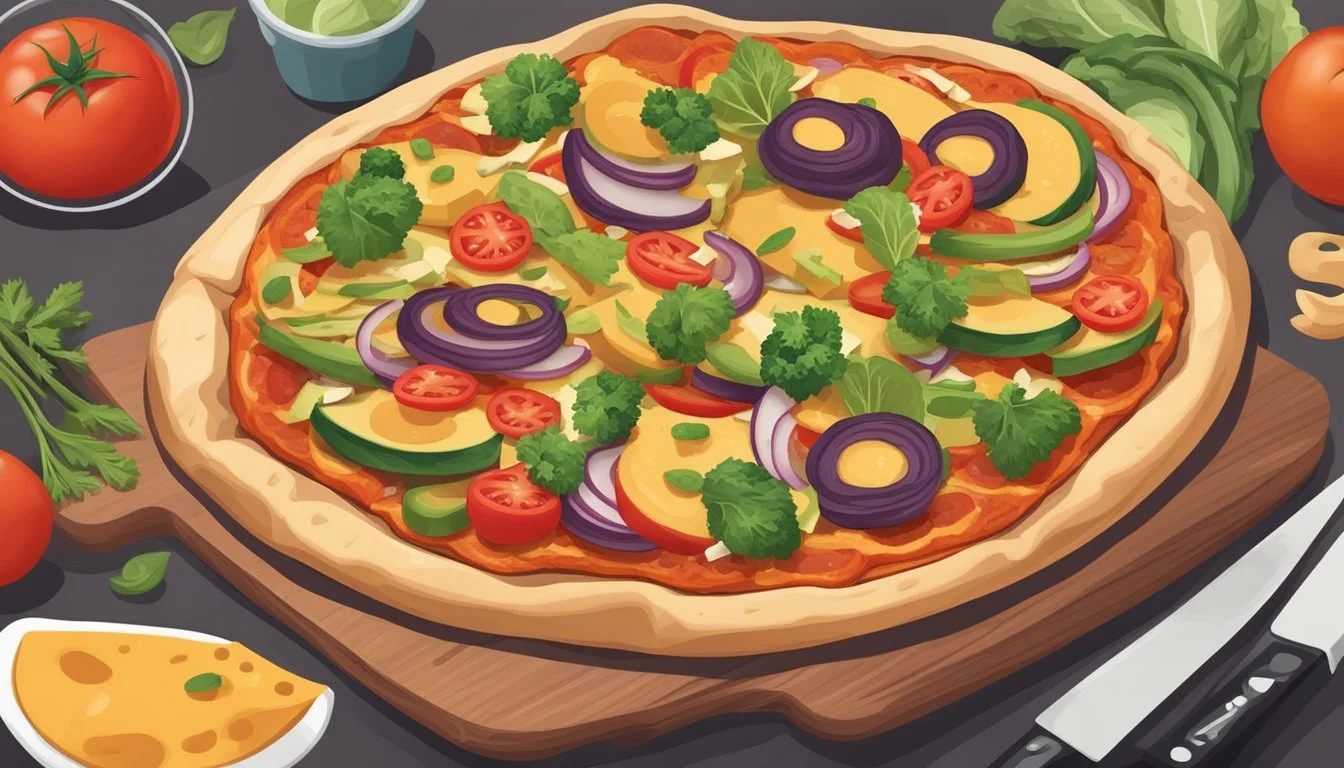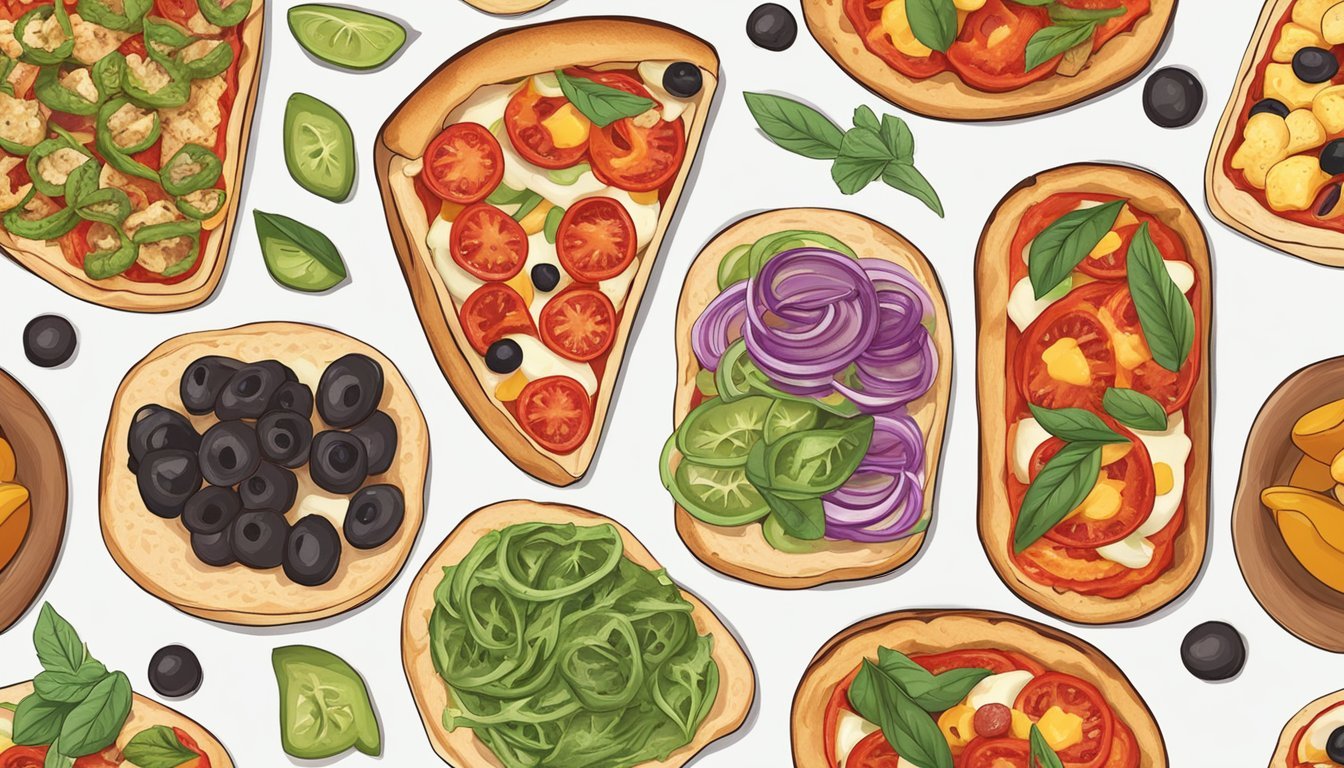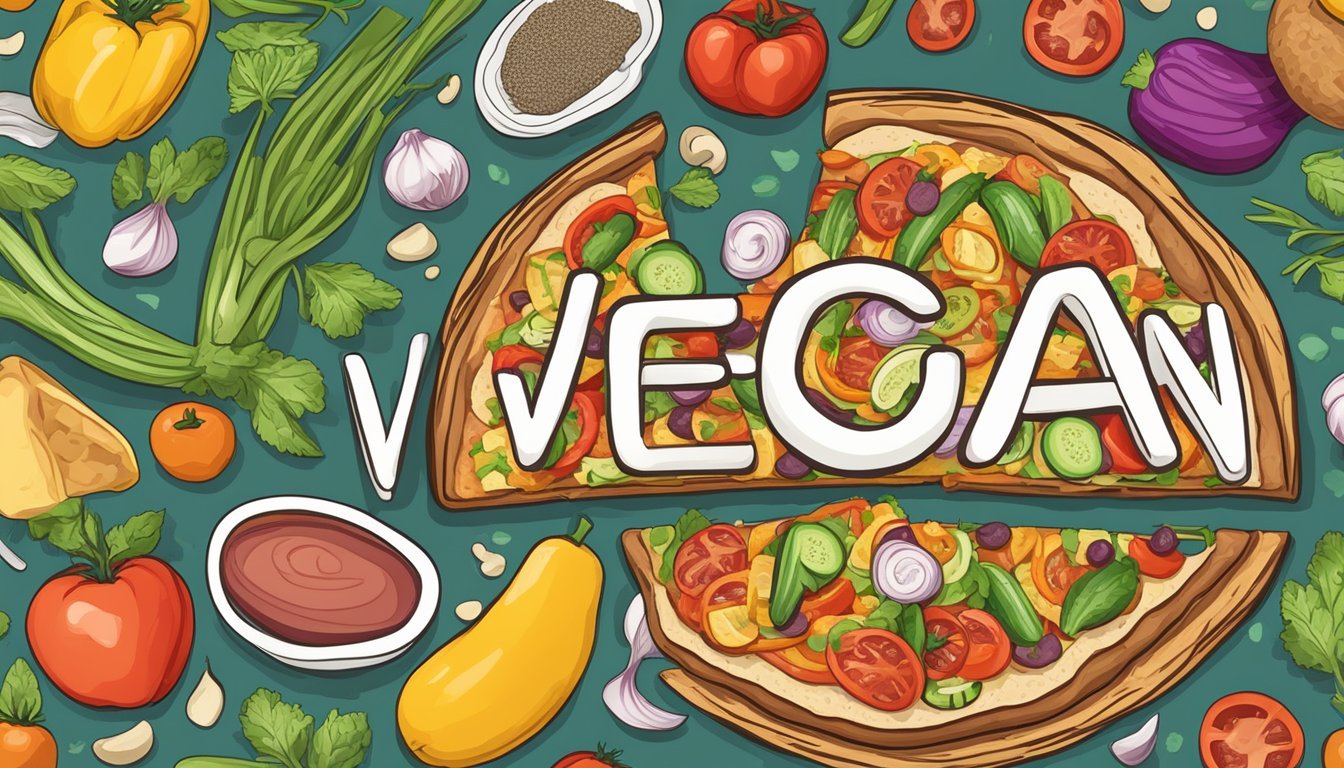Is French Bread Pizza Vegan?
Unveiling the Ingredients and Variations
French bread (What wine goes well with bread?) pizza (What wine goes well with pizza?) is cherished for its crispy crust, melty cheese, and customizable toppings, a quick and hearty meal that many enjoy. Traditionally, this dish is not vegan, as it typically includes cheese made from cow's milk and sometimes meat-based toppings such as pepperoni. However, with the rise of plant-based diets and the increased availability of vegan ingredients, French bread pizza can certainly be adapted to fit a vegan lifestyle.
Vegans can substitute traditional cheese with vegan mozzarella made from plant-based milks such as almond, soy, or coconut. Tomato sauce, a staple ingredient, is naturally vegan, and the French bread used as the base is often vegan too, though it's important to check for dairy and eggs among the ingredients. Vegan toppings such as mushrooms, olives, (What wine goes well with olives?) bell peppers, onions, or homemade vegan meats can add flavor and variety without the use of animal products.
Preparing vegan French bread pizza at home allows for control over the ingredients, ensuring they comply with vegan standards. The process is simple: one starts by toasting the bread slightly, then layers it with pizza sauce, vegan cheese, and their chosen toppings before baking it until the cheese is perfectly melted and the edges are golden brown. Despite some traditional recipes including non-vegan items, these adjustments enable anyone following a vegan diet to enjoy a slice of French bread pizza without compromise.
Understanding French Bread Pizza
French bread pizza combines the crispy exterior and soft interior of French bread with the beloved toppings of pizza. This fusion offers an alternative means of enjoying pizza flavors with a unique texture and presentation.
Origin and Definition
French bread pizza is a popular American invention, utilizing the long, crusty loaf known as baguette or French bread as its base instead of traditional pizza dough. It originated as a convenience food, offering a quick and easy alternative to traditional pizza without the need for preparing dough from scratch. Its definition is straightforward: pizza toppings on French bread baked to perfection, creating a hybrid dish that is both satisfying and accessible.
Traditional Components
The traditional components of French bread pizza are as follows:
French Bread: The foundation of this dish, it is usually cut lengthwise to create a flat surface for toppings.
Pizza Sauce: A tomato-based sauce seasoned with herbs like basil and oregano, spread over the bread.
Cheese: Typically, mozzarella cheese is melted over the sauce to create a gooey layer.
Toppings: These can vary widely to include meats, vegetables, and additional cheeses.
Baking Sheet: The prepared French bread pizzas are placed on baking sheets to be cooked in an oven, usually preheated to around 350-425°F, depending on the recipe.
In third-person terms, one could say, "They lay the French bread halves cut-side up on the baking sheet, coat them with sauce and cheese, add their favorite toppings, and bake them in the oven until the cheese is bubbly and golden brown." This dish allows for flexibility and can be customized according to one's personal taste preferences.
Vegan Diet Fundamentals
When considering vegan cuisine, such as a plant-based French bread pizza recipe, it is essential to understand the core principles of veganism and how these align with nutrition, focusing on the inclusion of essential nutrients like protein, iron, and fiber.
What Makes Food Vegan?
Vegan food excludes all animal products and by-products. This means that meat, dairy, eggs, and honey, among others, are not used. A plant-based French bread pizza recipe would use ingredients such as vegan cheese and plant-derived toppings instead of traditional animal-based toppings. Foods included in a vegan diet are:
Fruits and Vegetables: Rich in fiber, vitamins, and minerals.
Legumes and Pulses: These provide protein and iron.
Nuts and Seeds: They offer healthy fats and are good protein sources.
Whole Grains: These are important for fiber and energy.
It is crucial for vegan foods to be not only plant-based but also free from cross-contamination with non-vegan ingredients during processing.
Benefits of a Vegan Lifestyle
Adopting a vegan lifestyle can contribute positively to one’s health and the environment. Nutritionally speaking, vegan diets are typically high in dietary fiber, antioxidants, and phytonutrients, while being lower in calories and saturated fats. Here are some specific benefits:
Nutritional Value: A well-planned vegan diet can provide all the necessary nutrients. Plants are excellent sources of protein, iron, and fiber, among other nutrients.
Health Benefits: Vegan diets can support heart health, reduce the risk of certain types of cancer, and aid in weight management.
Additionally, from an environmental perspective, veganism can lead to a reduction in the carbon footprint associated with food production and promote more sustainable land use.
Crafting Vegan French Bread Pizza
To successfully craft a vegan French bread pizza, the selection of plant-based ingredients and careful attention to the assembly process are paramount. Choosing the right vegan substitutes and creating homemade toppings can result in a delicious and satisfying vegan alternative to the classic French bread pizza.
Vegan Substitute Ingredients
The foundation of any vegan French bread pizza is the appropriate selection of dairy-free and meat-free substitutes. Vegan cheese is a critical component, with vegan mozzarella shreds being a popular choice due to their similar melting characteristics to traditional mozzarella. For those desiring a more robust flavor, vegan pepperoni or pesto made without dairy can add depth to the pizza. Olive oil is often used to crust the bread for a crisp texture.
Ingredient Vegan Substitute Mozzarella Cheese Vegan Mozzarella Shreds Pepperoni Vegan Pepperoni Pesto Vegan Pesto (no dairy)
Homemade Vegan Toppings
Homemade vegan toppings not only add freshness but also allow for customization to cater to one's preference. A basic topping mix may consist of diced tomato, onion, mushrooms, black olives, and red onion. To enhance the flavor further, fresh herbs like basil and oregano, as well as aromatic garlic, can be sprinkled on top. It’s simple to prepare and mix these ingredients before baking to ensure an even distribution of flavors.
Tomatoes - Diced
Onions - Sliced or diced
Mushrooms - Sliced
Black Olives - Sliced
Red Onion - Thinly sliced
Garlic - Minced or sliced
Herbs (Basil, Oregano) - Freshly chopped or dried
Assembly Instructions
To assemble the vegan French bread pizza, first preheat the oven—usually to around 350°F to 425°F, depending on the recipe and desired crispiness. Start by cutting a baguette lengthwise and place it on a lined baking sheet. Brush the bread lightly with olive oil on both sides and place them cut side up on the baking sheet. Then, evenly distribute the tomato sauce over the surface, followed by a generous layer of vegan mozzarella shreds. Finally, add the prepared toppings, balancing the distribution for visual appeal and taste. Baking times may vary but often range around 8 to 10 minutes, or until the cheese has melted and the edges are golden brown.
Preheat oven to 350°F - 425°F.
Cut baguette lengthwise and brush with olive oil.
Place on a baking sheet, cut side up.
Spread tomato sauce, then sprinkle vegan mozzarella.
Add toppings evenly.
Bake until cheese melts and edges turn golden brown.
Following these specific instructions and selecting quality ingredients will ensure the creation of a flavorful, cruelty-free version of the classic French bread pizza.
Baking and Cooking Tips
When making a vegan French bread pizza, it's important to focus on specific baking methods and adjustments. These can greatly influence the outcome, ensuring the pizza has the desired crispiness and flavor.
Oven Preparation
The first step in making a vegan French bread pizza is to preheat a regular oven. Parchment paper or silicone mats are recommended to line a baking sheet to prevent sticking and ensure easy cleanup. These materials are also useful for achieving a non-burnt but crispy crust.
Cook Time and Temperature
Vegan French bread pizzas cook best at a range of temperatures, usually between 350°F and 425°F. An initial higher temperature can be used to quickly achieve a golden, toasty crust, then, if necessary, the temperature can be reduced to allow the toppings to warm through without burning the bread.
Achieving a Crispy Crust
For a crispy crust, one should lightly brush the bread with olive oil before baking. Placing the bread slices cut side up on the preheated baking sheet helps to crisp the surface directly against the heat. Additionally, one might consider pre-toasting the bread under a broiler for 2-3 minutes before adding toppings. This can help maintain a crispy texture despite the moisture from sauces and toppings.
Customization and Variations
French bread pizza offers a versatile canvas for a range of vegan toppings and sauce variations. By customizing ingredients, one can cater to personal taste preferences while adhering to a vegan diet.
Exploring Different Toppings
The choice of toppings can transform the essence of French bread pizza. One can opt for classic vegetables like olives, peppers, artichokes, (What wine goes well with artichokes?) and spinach, which not only contribute to the nutritional profile but also add a burst of color and flavor. For a bolder twist, marinated tofu, tempeh, or even a chickpea-based sausage can boost the protein content and offer a satisfying texture.
Vegetables: olives, peppers, artichokes, spinach
Protein: tofu, tempeh, chickpea sausage
Vegan Cheese Alternatives
Vegan cheese has evolved significantly, with options ranging from soy-based and nut-based to coconut oil varieties. These can be shredded or sliced to mimic the meltability and rich flavor of traditional cheese. A quality vegan mozzarella or cheddar can be generous sprinkled atop the pizza, melting beautifully under the heat to create an indulgent, stretchy topping.
Types of Vegan Cheese:
Soy-based
Nut-based (e.g., cashew, almond)
Coconut oil-based
Creative Sauce Options
While a rich tomato sauce is a staple for most pizzas, French bread pizza can be customized with a variety of creative sauce bases. Pizza sauce enriched with herbs such as basil and oregano can lay a flavorful foundation. For those seeking a twist, BBQ sauce offers a smoky sweetness that pairs well with a myriad of vegetable and protein toppings.
Sauce bases:
Herb-enriched tomato sauce
BBQ sauce
Presentation and Serving
When serving French bread pizza, one must consider both the context of the meal—be it a snack or dinner—and the visual appeal on the plate.
Serving Suggestions for Meals and Snacks
For those enjoying French bread pizza as a dinner entree, they may wish to present two to three sizeable segments per person, ensuring a satisfying serving that constitutes a full meal. If the pizza serves as a snack, smaller portions, perhaps one or two small segments, would be appropriate to not overwhelm the appetite.
Meals: 2-3 segments per serving
Snacks: 1-2 small segments per serving
Decorative Garnishing Tips
To enhance the presentation, the cook can use a variety of garnishes. A sprinkle of fresh herbs, such as basil or oregano, adds both color and flavor. A dusting of nutritional yeast or a drizzle of a balsamic glaze can elevate the dish visually and tantalize the palate. It's crucial to garnish just before serving to maintain the freshness and vibrancy of the toppings.
Herbs: Basil, Oregano
Enhancements: Nutritional yeast, Balsamic glaze
Nutrition and Health Aspects
When examining the nutrition and health aspects of vegan French bread pizza, one must consider the caloric content and the balance of macronutrients, as well as the presence of any allergens or dietary restrictions that might affect certain individuals.
Caloric and Macronutrient Information
Vegan French bread pizza varies in caloric content depending on the size of the serving and the toppings used. A typical slice can range from approximately 200 to 400 calories. The macronutrient balance consists predominantly of carbohydrates due to the bread base, with moderate protein and variable fat content, again heavily influenced by the choice of toppings.
Carbohydrates: The bread provides a significant amount of carbs, which are the body's primary energy source.
Protein: Protein levels may be enhanced by including toppings such as plant-based cheeses and meats; chickpeas are one option that contributes both protein and iron.
Fats: The fat content can be controlled through the use of varying amounts of olive oil and type of vegan cheese.
Fiber: Whole grain French bread and vegetable toppings can increase the fiber content, beneficial for digestion.
Allergen and Dietary Considerations
Vegan French bread pizza typically excludes dairy and meat, making it suitable for vegans and some individuals with lactose intolerance or allergies to animal products. However, potential allergens may include:
Gluten: As French bread is made from wheat, individuals with celiac disease or gluten sensitivity should opt for gluten-free bread options.
Soy and Nuts: Some vegan cheeses and meat substitutes are soy or nut-based, important for those with relevant allergies to consider.
Cross-Contamination: In instances where the pizza is not prepared in a strictly vegan or allergen-free environment, cross-contamination with animal products, nuts, or gluten-containing ingredients might occur.
It is essential for those with dietary restrictions to verify the exact ingredients and preparation environment of their vegan French bread pizza to prevent adverse reactions.
Additional Resources
To enhance the vegan French bread pizza experience, a variety of online platforms offer communities where one can seek advice and find recipes. These resources are particularly beneficial for those seeking comfort food that is easy to make and align with a vegan lifestyle.
Online Vegan Communities and Support
Online communities provide a valuable space for vegans to connect, share experiences, and offer support to one another. For hands-on guidance and personal stories, Instagram is a robust platform where many vegans showcase their French bread pizza creations and other recipes. Following hashtags like #VeganPizza and #VeganCommunity can lead to a wealth of visual inspiration and tips from fellow vegan cooks.
Supplementary Recipe Inspiration
The internet is replete with recipes for those who seek to transform French bread into a delectable vegan treat. Aside from the recipes briefly mentioned in search results, enthusiasts can explore culinary websites and food blogs for an array of vegan French bread pizza variations - each offering a different twist of toppings or preparation methods. Anyone in search of easy to make vegan comfort food can find a multitude of French bread pizza recipes suited to their taste and skill level. Lists and tables on these sites often provide clear instructions and ingredient breakdowns, making the process accessible for all cooks.
Conclusion
French bread pizza can be a delectable and satisfying option for those following a vegan diet. Using simple substitutes for traditional toppings, one can craft a variety of nutritious meals. Vegan French bread pizza relies on plant-based ingredients – from dairy-free cheese to meat-free proteins like chickpeas.
Key Components for Vegan French Bread Pizza:
Bread Base: Opt for vegan French bread, ensuring it's free from animal-based ingredients.
Sauce & Herbs: Use a blend of tomato sauce, basil, and oregano, checking for any non-vegan additives.
Toppings: Creativity shines with toppings like vegan mozzarella, plant-based sausage, or an array of vegetables.
Preparation: Typically baked, the pizzas are cooked at high temperatures resulting in a crisp texture.
Given that pizza is inherently customizable, vegan French bread pizza can be tailored to individual taste preferences and nutritional needs. It can be an amalgamation of healthful ingredients and one's culinary creativity. The appeal lies in the balance of a crisp exterior with a richly topped, flavor-packed interior.
This meal option reaffirms that vegan cuisine can be both versatile and accessible. When prepared with attention to detail and quality ingredients, French bread pizza stands as an inviting dish within vegan cuisine's diverse collection.







